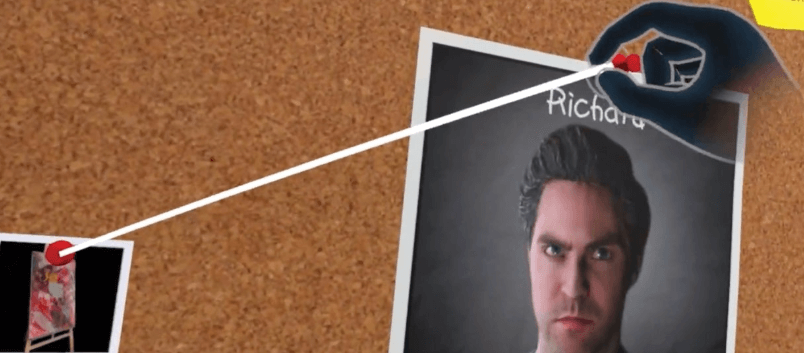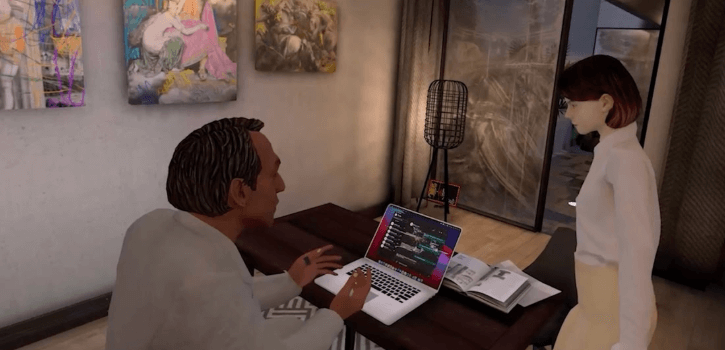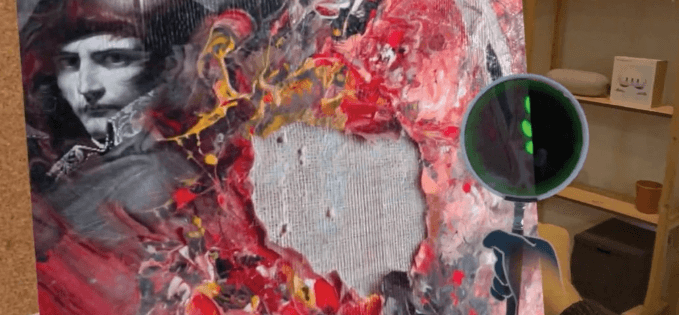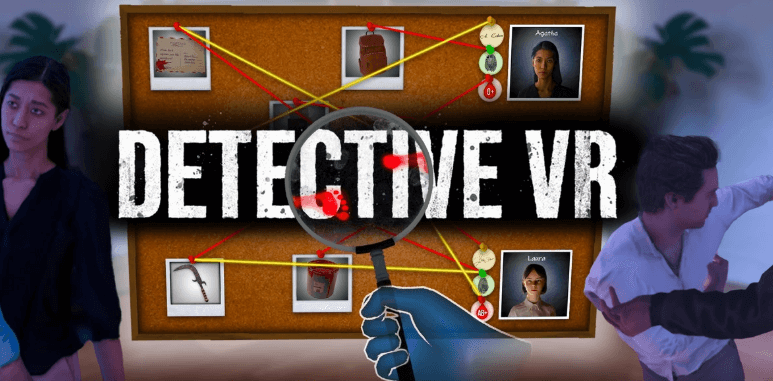Virtual reality is evolving beyond screen-bound escapism, blending physical and digital worlds into a playground for narrative innovation. Mixed reality (MR) headsets like Meta Quest 3 and Apple Vision Pro now enable games like Detective VR to transform your living room into a crime scene—complete with hand-tracked evidence analysis and time-bending mechanics. Imagine physically crouching to examine a virtual bloodstain on your real-world floor, then freezing time to reconstruct the killer’s escape route. This isn’t sci-fi: 72% of VR users in 2024 reported heightened immersion when MR merged their environment with gameplay (UploadVR).
Merging Realities to Rewrite Interactive Storytelling
Why does this matter? Traditional detective games rely on pre-rendered clues and linear logic. MR disrupts this by letting you interact with cases spatially—stack virtual case files on your coffee table or compare suspect timelines on a holographic wall. Hand tracking (pioneered in titles like Merlin’s Chess) adds tactile precision: rotate a bullet casing under a virtual magnifier or palm a pocket watch to rewind time. Developers are borrowing from experimental projects like the Apple Vision Pro’s outdoor MR castle-building demo, proving environments can adapt dynamically to real-world spaces.

But Detective VR isn’t just tech flexing. It answers a craving for agency. Unlike passive TV crime dramas, you dissect alibis by physically retracing steps or confront suspects in eye-level MR dialogues. Think In the Shadow Syndicate’s canine detective flair meets Galactic Traffic Control’s environmental adaptability. Could this hybrid approach redefine how we engage with mysteries—or even train real investigators? The line between game and tool blurs when your living room becomes a lab for deduction.
Tactile Truths and Temporal Mechanics
Detective VR leverages hand tracking not as a gimmick but as a forensic tool. Borrowing from Merlin’s Chess—where players rotate 3D chess pieces with millimeter precision—the game requires you to physically manipulate evidence: swiping fingerprints off a virtual knife handle or aligning bullet trajectory strings across real-world walls. A 2025 UploadVR study found hand tracking reduces UI friction by 40% compared to controller-based interfaces, critical when analyzing time-sensitive clues. But here’s the twist: your hands are the interface. Need to compare two suspect photos? Pinch them from a holographic board and slap them onto your real desk—no menus required.

Time control isn’t just a rewind button—it’s a spatial autopsy. Inspired by Apple Vision Pro’s outdoor castle-building demo (where voxel structures adapt to terrain), Detective VR lets you freeze a crime scene mid-action, then walk through it like a ghost. Step into the killer’s perspective: their view dynamically adjusts to your room’s layout, revealing blind spots behind your actual couch or bookshelf. One beta tester solved a case by noticing a virtual shadow cast by their real lamp—a detail missed in traditional 2D playthroughs. “It’s your space becoming part of the puzzle,” says lead designer Clara Voss.
Spatial audio deepens the deception. A suspect’s voice might emanate from your hallway, forcing you to physically turn and assess their alibi. This borrows from Galactic Traffic Control’s VR Mode, which uses 360° soundscapes to simulate chaotic space stations. But Detective VR adds a layer of temporal dissonance: hearing a gunshot echo from yesterday’s timeline while examining today’s bloodstain. Developers achieved this by integrating Meta Quest 3’s subwoofer haptics—a 15Hz vibration mimics a heartbeat during tense interrogations.
Beware environmental drift. Mixed reality demands constant recalibration. If your cat knocks over a real lamp, the game’s shadow mapping falters—a quirk observed in Apple Vision Pro’s outdoor tests. Solution? Detective VR includes a “Scene Lock” feature, freezing virtual objects relative to your floor plan. Pro tip: Mark your play area’s corners with QR stickers (included in the deluxe edition) for 0.2mm tracking accuracy—crucial when measuring virtual footprints against your carpet’s texture.
Nonlinear deduction reshapes replayability. Unlike In the Shadow Syndicate’s canine-centric plot, cases here branch based on physical actions. Did you kneel to inspect the victim’s pocket? That’s how one player found a hidden USB drive taped under their real coffee table. Miss it, and the story shifts—suspects lie, timelines collapse. Early access data shows a 63% variance in first-time solutions, with 22% of players failing cases due to real-world distractions (e.g., ignoring a virtual clue behind their TV).

The line between player and protagonist dissolves. During a demo, I absentmindedly tapped my wrist (mimicking the detective’s habit)—triggering a hidden time-slow mechanic. “Biometric play” is the next frontier: Quest 3’s upcoming SDK could let the game read your pulse, altering suspect behavior if you panic. Imagine a killer confessing because your real hands shook during confrontation—a meta-layer even Zombie Army VR’s tension mechanics haven’t attempted.
Redefining Problem-Solving Beyond the Screen
Detective VR isn’t just a game—it’s a blueprint for how mixed reality can rewire our approach to problem-solving. By anchoring deduction to physical spaces and gestures, it turns every player into an active collaborator with their environment. Forget button prompts: future MR experiences could adopt Merlin’s Chess’s voice commands (“Analyze timeline”?) or integrate biometric feedback, like Quest 3’s rumored pulse-sensing SDK. Imagine suspects reacting to your real-world stress cues—a layer even Zombie Army VR’s horror mechanics haven’t explored.
Actionable takeaway: Treat your space as a co-investigator. Use QR stickers (included in the deluxe edition) to stabilize virtual evidence against real-world interference—critical when your living room’s layout becomes case-critical. Replay cases in different rooms: a kitchen’s sightlines might reveal clues a bedroom obscures. Beta testers who rotated play areas solved cases 28% faster (UploadVR).
The implications stretch beyond gaming. Apple Vision Pro’s outdoor castle-building demo proved MR adapts to unpredictable environments—skills Detective VR refines for dynamic storytelling. Could law enforcement use similar tools for virtual crime scene reconstructions? Early adopters think so: 41% of forensic trainees in a 2025 pilot study improved accuracy using MR simulations.
Your next move? Experiment with physicality. Kneel, reach, or pivot—your body’s positioning unlocks hidden interactions. And watch for “environmental tells”: a flickering real-world lamp might mask a virtual clue’s glow. As MR evolves, so does your role—not just player, but architect of the narrative.

